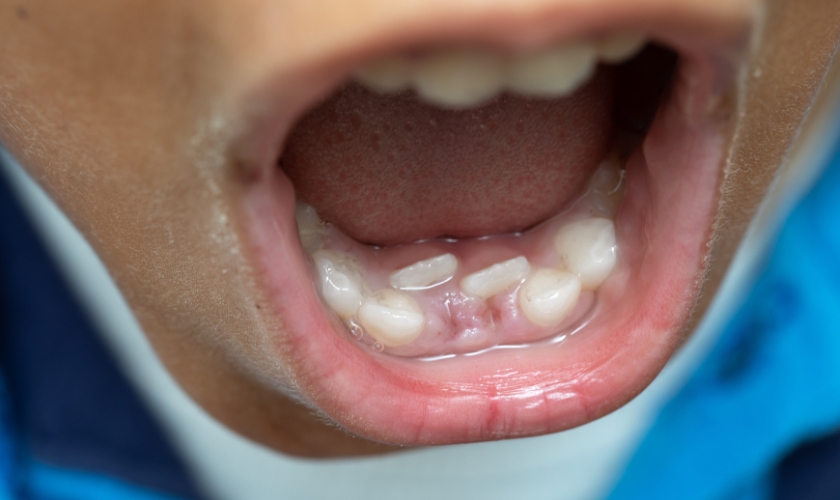Call: (810) 674-3060
How Long Does Orthodontic Treatment Typically Last?

Orthodontic treatment plays a crucial role in enhancing oral health and improving smiles. By correcting misaligned teeth and jaws, orthodontics helps prevent future dental issues.
Understanding how long this treatment typically lasts is essential for anyone considering braces or aligners. Many people mistakenly believe that all orthodontic treatments take years to complete.
In reality, treatment duration varies significantly based on several factors. Knowing what to expect can help patients plan their journey toward a healthier smile.
What is Orthodontic Treatment?
Orthodontic treatment is a specialized branch of dentistry focused on diagnosing and correcting irregularities in teeth and jaws. The primary goal is proper alignment, ensuring a straight smile and functional bite. Common orthodontic appliances include traditional metal braces, ceramic braces, and clear aligners like Invisalign. Each option serves unique needs and preferences.
Braces consist of brackets and wires that work together to move teeth into their ideal positions. In contrast, clear aligners offer a more discreet way to straighten teeth without noticeable hardware.
Orthodontic treatment also addresses aesthetic concerns, enhancing self-confidence. Proper alignment can reduce the risk of dental issues, such as cavities and gum disease, contributing to oral health.
Factors Affecting Treatment Duration
Type of Orthodontic Appliance
The type of orthodontic appliance significantly influences treatment duration. Traditional braces typically take longer than clear aligners, and they use brackets and wires, which may require more adjustments.
In contrast, clear aligners can often reduce treatment time due to their removable nature. The ease of switching between aligners means patients may experience a faster alignment process.
Age of the Patient
Age also plays a vital role in determining treatment duration. Children usually have more flexible jawbones, making it easier to shift teeth into proper positions. As a result, treatment for children and teenagers often takes less time.
Adults, however, may experience longer treatment durations due to more developed jaw structures.
Severity of the Orthodontic Issue
The complexity of the orthodontic issue also affects how long treatment lasts. Simple cases, like minor crowding, may require less time, while complex issues, such as severe bite problems, can extend treatment duration. Orthodontists will assess each case individually to provide an accurate timeline.
Patient Compliance
Patient compliance is crucial in determining treatment duration. Following the orthodontist’s instructions is vital for successful outcomes. Patients must wear aligners as prescribed and attend regular appointments for adjustments. Failing to comply can lead to delays and prolong the overall treatment timeline.
Average Treatment Times
Average treatment times vary depending on the type of orthodontic appliance used. Traditional braces generally last 18 to 36 months, allowing for gradual tooth movement and proper alignment. Clear aligners, on the other hand, usually take about 6 to 18 months, making them a faster option for many patients.
Post-treatment care often involves retainers to maintain the results achieved during the active treatment phase. Depending on the individual case, retainers can be worn for a few months to several years.
Every patient’s situation is unique, and individual variations in treatment times are common. Factors such as compliance and specific orthodontic goals can lead to differences in overall duration.
Timeline of the Orthodontic Journey
The orthodontic journey typically unfolds in three main phases. The first phase is the initial consultation and assessment. During this appointment, the orthodontist evaluates the patient’s needs and creates a treatment plan. This phase usually takes about an hour.
The active treatment phase follows, where the chosen appliance is placed. This phase may last anywhere from 6 months to 3 years, depending on the severity of the case. Patients will have regular check-ups every 4-8 weeks for adjustments.
Finally, the retention phase begins once the active treatment is complete. This phase is crucial for maintaining the results achieved. Patients will wear retainers, usually for several months to a few years, to ensure teeth stay in their new positions.
What to Expect During Treatment?
During orthodontic treatment Burton, patients can expect regular adjustments and visits. These appointments are essential for monitoring progress and making necessary adjustments. Adjustments may involve tightening wires or swapping aligners depending on the appliance type.
Patients may experience some discomfort after adjustments, but this typically subsides within a few days. Orthodontists recommend over-the-counter pain relief for managing discomfort.
Additionally, certain food restrictions may apply during treatment. Patients with braces should avoid sticky or hard foods that could damage the appliances. Maintaining good oral hygiene is also crucial throughout the treatment process.
In summary, the duration of orthodontic treatment varies based on multiple factors, including appliance type, patient age, issue severity, and compliance. Understanding these factors can help patients prepare for their orthodontic journey. Individuals can achieve beautiful, healthy smiles by committing to the treatment process.
If you are considering orthodontic treatment in Burton, consult our orthodontists to get personalized insights on what to expect regarding treatment duration. Your journey to a confident smile starts with the correct information and guidance!




